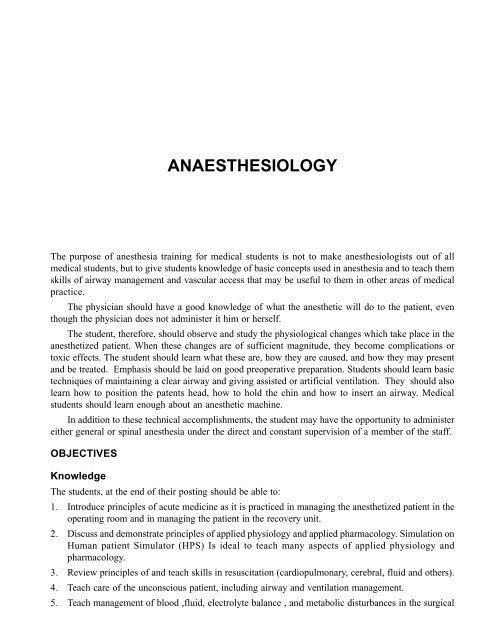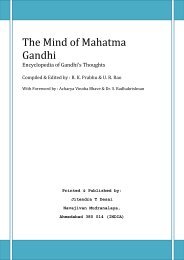Syllabus - MBBS
You also want an ePaper? Increase the reach of your titles
YUMPU automatically turns print PDFs into web optimized ePapers that Google loves.
ANAESTHESIOLOGY<br />
The purpose of anesthesia training for medical students is not to make anesthesiologists out of all<br />
medical students, but to give students knowledge of basic concepts used in anesthesia and to teach them<br />
skills of airway management and vascular access that may be useful to them in other areas of medical<br />
practice.<br />
The physician should have a good knowledge of what the anesthetic will do to the patient, even<br />
though the physician does not administer it him or herself.<br />
The student, therefore, should observe and study the physiological changes which take place in the<br />
anesthetized patient. When these changes are of sufficient magnitude, they become complications or<br />
toxic effects. The student should learn what these are, how they are caused, and how they may present<br />
and be treated. Emphasis should be laid on good preoperative preparation. Students should learn basic<br />
techniques of maintaining a clear airway and giving assisted or artificial ventilation. They should also<br />
learn how to position the patents head, how to hold the chin and how to insert an airway. Medical<br />
students should learn enough about an anesthetic machine.<br />
In addition to these technical accomplishments, the student may have the opportunity to administer<br />
either general or spinal anesthesia under the direct and constant supervision of a member of the staff.<br />
OBJECTIVES<br />
Knowledge<br />
The students, at the end of their posting should be able to:<br />
1. Introduce principles of acute medicine as it is practiced in managing the anesthetized patient in the<br />
operating room and in managing the patient in the recovery unit.<br />
2. Discuss and demonstrate principles of applied physiology and applied pharmacology. Simulation on<br />
Human patient Simulator (HPS) Is ideal to teach many aspects of applied physiology and<br />
pharmacology.<br />
3. Review principles of and teach skills in resuscitation (cardiopulmonary, cerebral, fluid and others).<br />
4. Teach care of the unconscious patient, including airway and ventilation management.<br />
5. Teach management of blood ,fluid, electrolyte balance , and metabolic disturbances in the surgical



